Woodland Garden
The Mertensia virginica, Virginia Bluebells, are blooming. The native ones that were on my property gradually disappeared over the years. These came from Mike Broz in Southern Indiana. Somewhere I picked up some exotic, possibly Siberian, Claytonia which apparently hybridized with our native Claytonia virginica in my garden; and now the hybrids are thriving. The flowers are larger and the plants stouter than either of the parents; and if it ever stops raining for a day or two, I'll get some pictures of them.
Sometime in the past week it did stop raining for two days. I got pictures of Trillium recurvatum and T. sessile, both native to Indiana and both blooming in my garden just now.
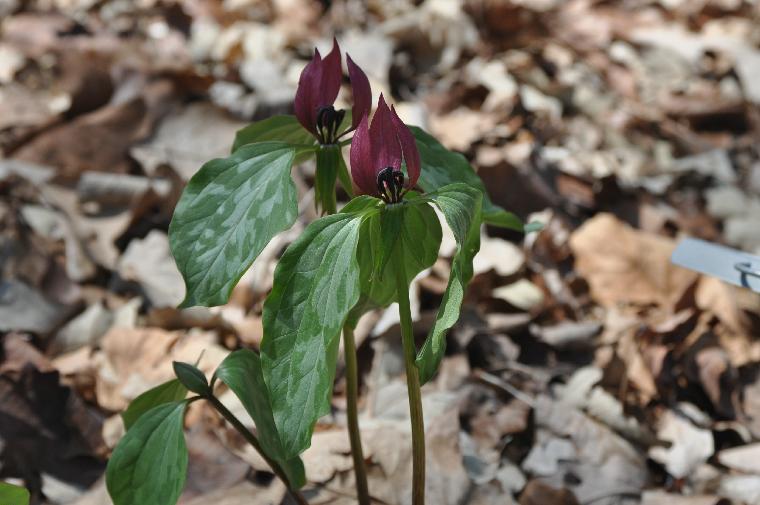
Trillium recurvatum
Trillium recurvatum is instantly recognizable by the sepals hanging straight down when the flower is in bloom. The leaves also have a pseudopetiole, being gradually narrowed towards the base. Of course, strictly speaking, trilliums do not have leaves; they have three large bracts on the flowering stem, just below the flower itself. T. recurvatum is native to Indiana and to much of the Great Lakes area and south along the Mississippi River, according to Flora of North America, vol. 26, pp. 114-115 (2002). Another petiolated trillium is T. petiolatum from the Western U.S.A., which also has downward pointing sepals.
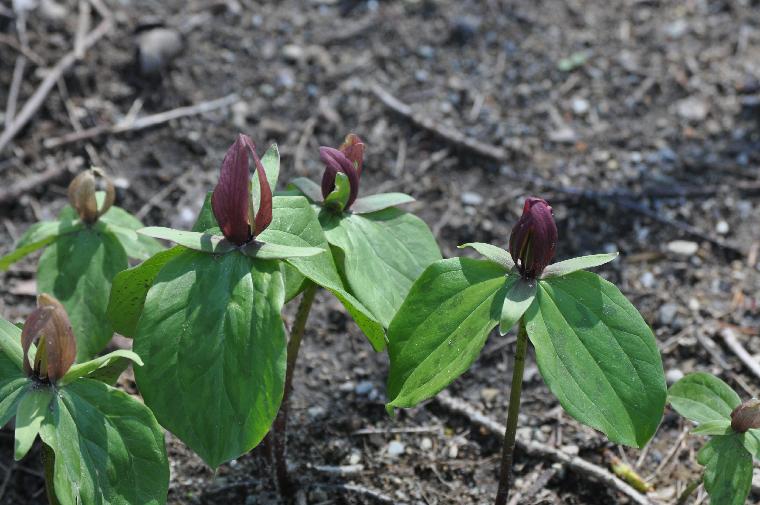
Trillium sessile
From Southern Indiana
Trillium sessile is native to Indiana, but whereas T. recurvatum grows right in my neighborhood, sessile is not around here. These came from Southern Indiana, again courtesy of Mike Broz. Note the sepals on these sessile: held horizontally from the base of the petals. Also, the leaves (well, OK, "bracts") are broadly rounded and full at the base, lacking the pseudopetioles of recurvatum. T. sessile is native to a broad swath of the Midwest, from Oklahoma to Pennsylvania, again according to FoNA. Sessile is a small plant, compared to things like simile, luteum, and particularly cuneatum. It is even smaller than recurvatum, at least in my garden.
The genus Arisaema is in the Araceae, the Aroid Family. Two species of Arisaema are native to my area, Arisaema triphyllum and A. dracontium. These are not in bloom yet, but Arisaema engleri, native to China, is blooming in the woodland garden. I got three large tubers of this from the U.C. Berkeley Botanical Garden last year. Two came up and are in bloom this spring.
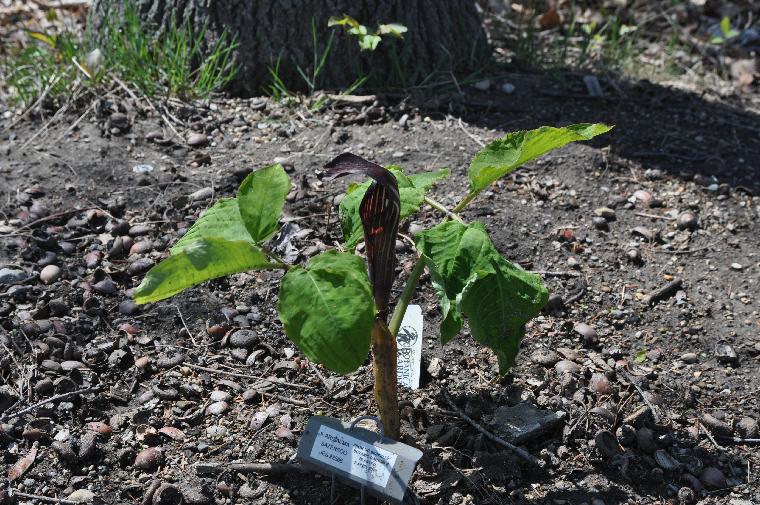
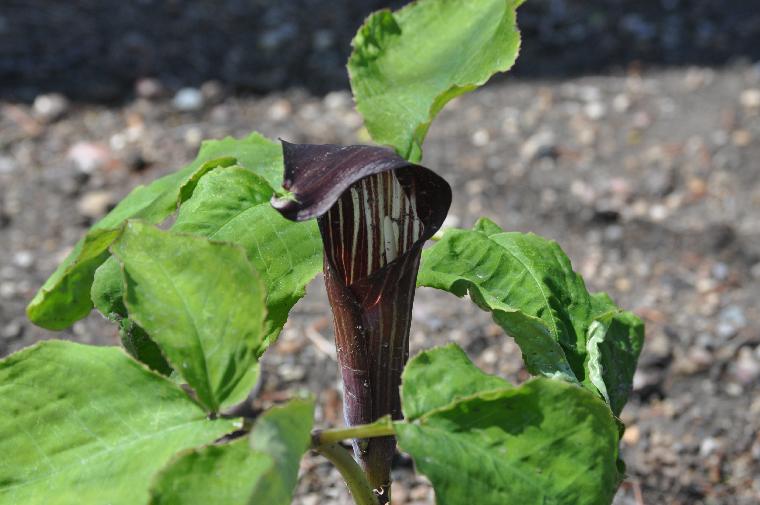
Arisaema engleri
From China
I'm very pleased to have these, and I hope they turn out to be hardy in my garden. These particular tubers came labeled as A. sazensoo, which is native to Japan and was in my garden for years before eventually dying off. I'm always looking for hardy Arisaema for my garden. A. heterophyllum is quite hardy here, and blooms in a semi-sunny spot; it is just now starting to come up.
The genus Erythronium, in the Liliaceae (Lily Family) is found around the world in the Northern Hemisphere. The flowers are variously know by common names like Dog-tooth Violet and Trout Lily. The most well-known in gardens are probably varieties and forms of the species native to Europe, Erythronium dens-canis.
The native Erythronium here in Indiana, E. americanum and E. albidum, do well enough in my garden. Exotic erythroniums do not do so well here. All that I have tried so far have gradually died off except for one species: Erythronium macroscapideum (also written "multiscapoideum").
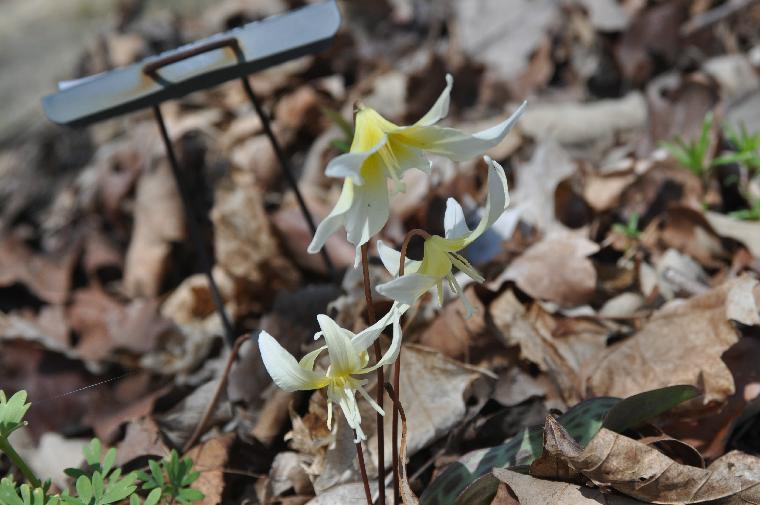
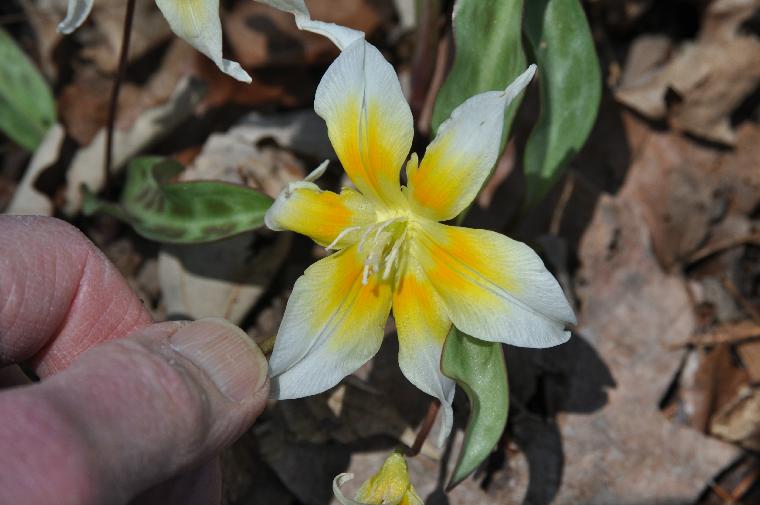
Erythronium multiscapideum
From California
It has been raining here for days, but the heaviest rains have bypassed us here in Westfield and gone through Southern Indiana. Most of the tornados have also been in Southern Indiana, although one did some damage to farms outside Thorntown, about 15 miles northwest of here. I love Springtime, but the weather can get a bit trying sometimes. So far, I have only had to pick up dead twigs and small branches as a result of the winds, all pretty normal for an average winter here in central Indiana.
Good gardening, from here in central Indiana
Jim
Look up technical terms in the Glossary of Plant Biology